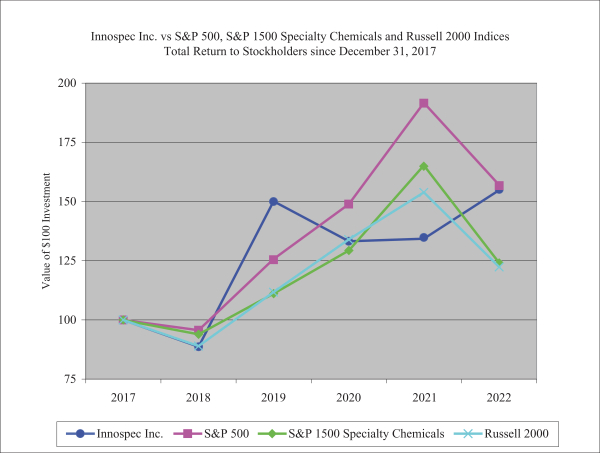was primarily related to the increases for our working capital being partly offset by the improvements in our earnings before depreciation and amortization.
Cash
At December 31, 2022 and 2021, we had cash and cash equivalents of $147.1 million and $141.8 million, respectively, of which $76.4 million and $55.1 million, respectively, were held by non-U.S. subsidiaries principally in the United Kingdom.
The $5.3 million increase in cash and cash equivalents in 2022 was driven by the cash inflows from operating activities, while being partly offset by increased working capital levels, continued investments in capital projects and the payment of our semi-annual dividends.
Debt
As at December 31, 2022 and December 31, 2021 the Company had repaid all of its borrowings under the revolving credit facility and as a result, the related deferred finance costs of $0.6 million (December 31, 2021 – $1.0 million) are now included within other current and non-current assets at the balance sheet date.
On September 16, 2020, Innospec and certain of its subsidiaries agreed to extend the term of its revolving credit facility, as described below, until September 25, 2024. The costs of $0.3 million for extending the term have been capitalized on the balance sheet, which are being amortized over the expected life of the facility.
On September 30, 2019 the Company repaid its pre-existing term loan and revolving credit facility that had been amended and restated on December 14, 2016, and replaced this borrowing with the new credit facility. As a result, refinancing costs of $1.5 million were capitalized which are being amortized over the expected life of the facility.
On September 26, 2019, Innospec and certain of its subsidiaries entered into a new agreement for a $250.0 million revolving credit facility until September 25, 2023 with an option to request an extension to the facility for a further year. The facility also contains an accordion feature whereby the Company may elect to increase the total available borrowings by an aggregate amount of up to $125.0 million.
The revolving credit facility contains terms which, if breached, would result in it becoming repayable on demand. It requires, among other matters, compliance with the following financial covenant ratios measured on a quarterly basis: (1) our ratio of net debt to EBITDA must not be greater than 3.0:1.0 and (2) our ratio of EBITDA to net interest must not be less than 4.0:1.0 Management has determined that the Company has not breached these covenants and does not expect to breach these covenants for the next 12 months.
The revolving credit facility contains restrictions which may limit our activities as well as operational and financial flexibility. We may not be able to borrow if an event of default is outstanding, which includes a material adverse change to our assets, operations or financial
44
